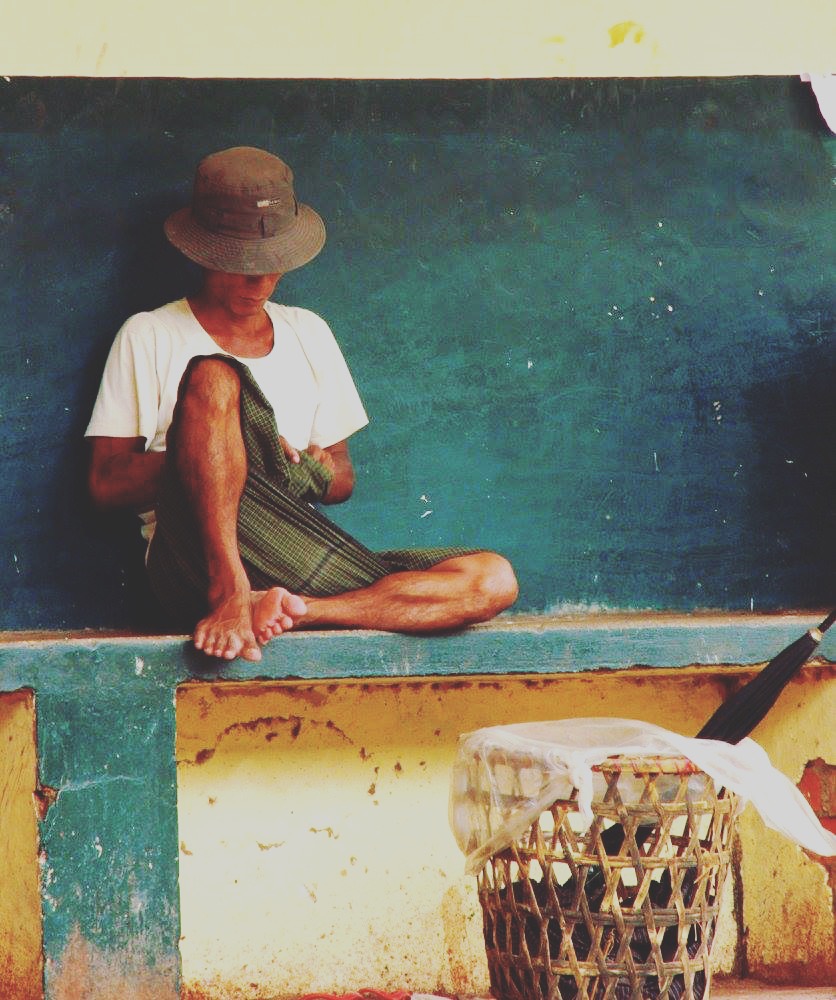Yangon is more than a city to me. It is an emotion. A very known, yet strangely unfamiliar emotion, similar to deja vu. The reason is perhaps the uncanny similarity it has with my hometown Calcutta and the Burmese city comes complete with dilapidated photogenic parts, colourful chaos and a lively bustle. It has gorgeous crumbling neoclassical mansions in juxtaposition with the box like Krushchev style apartment blocks with satellite TV dishes stuck on the windows, creaking cycle trishaws, fresh produce markets which throb with crowded, colourful bustle and narrow congested lanes choked with traffic. The sky often suffocates the city in a familiar damp way and then there’s the staggering amount of the well known British colonial hangover. Tea houses, bamboo hats, posh clubs, “very propah” English signboards, betel nut stained red teeth, swirling lyongis, uniformed school children, and the trundling Circular Railway; all reek of a severe Calcutta throwback and the Bengali lilting style of talking is always there in the background. The city’s food drips with strong Indian influences and from watery Bengali style fish curries to oily parathas and fiery dosas; everything adds to the surreal “I am in Calcutta of the 70’s” feeling.
Table of Contents
The unfamiliar similarity of Yangon
When all these features start to create a tug at the heartstrings of home, Yangon begins to reveal its unfamiliar exotic side. Thanaka make up makes its presence felt, the skyline gets jagged with tall pagodas, saffron robes of monks intersperse the lyongis and tattooed faces of wrinkled Chin grandmothers peep from underneath battered British style rattan topis (locally made sun hats preferred by the English colonial rulers). The Circular Railway gets enveloped in a magical time warped aura and the Indian origin Burmese feel like distant cousins. These heighten the strange deja vu feeling again and Yangon becomes an emotion you cannot explain.
Recommended Read: The beauty of Bagan
The soul sister cities of Calcutta and Yangon
Being a born and brought up in Calcutta, Yangon was not an easy experience for me and I found it difficult to differentiate between the two cities. They were like identical twins to me, with Calcutta growing up faster than the other. Many a time, while walking around the gritty grid of lanes of downtown Yangon, I was strongly reminded of the Dalhousie area of Calcutta and the Yangon river was as sluggish as the Hooghly. The Burmese stupa of Sule Paya, which pierced through the heart of downtown Yangon seemed like the busy Kalighat temple and the green areas were identical to the wetlands of eastern Calcutta.
Suggested Read: Lake Inle photo essay
Yangon is a city of Shwedagon Pagoda and massive colonial hangover
Only, the magnificent Shwedagon Pagoda was quintessentially Yangon and the gold and diamond encrusted massive stupa dazzled all the similarities away. One of the most famous pagodas in the world, Shwedagon is the most important sight of Yangon and it stood overlooking the city, atop the Singuttara Hill. The 99 meters tall golden monument completely dominates the city’s skyline and at nights its diamonds twinkle like a thousand stars. This richness was a strange contrast to Yangon’s dilapidated atmospheric beauty and in my eyes, the rest of the city had still not shed its colonial Rangoon times. I preferred the human aspect of Yangon over its spiritual glory and fell in love with its animated markets, decaying historical charm, and the intriguing faces which pockmark the cityscape. That is why, this post is dedicated to Yangon (formerly and romantically called Rangoon) and all those things which make the Burmese city, so unforgettably special.
Check out the rest of the Myanmar
RESPONSIBLE TRAVELING-BECAUSE I CARE


















